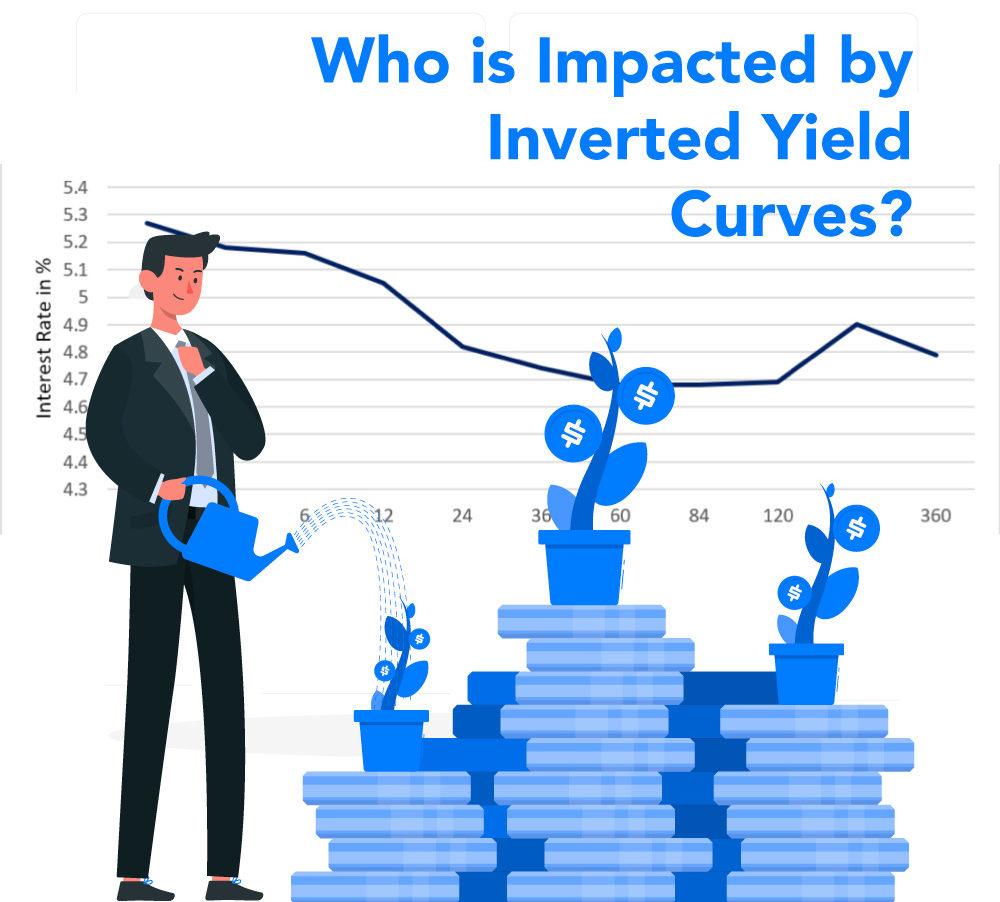The market is constantly changing. Stock prices go up and down, interest rates vary, and new investment types are emerging all the time. It’s impossible to predict what the future will hold. However, some key indicators signal to investors that trouble is on the horizon. By understanding these concepts and making calculated decisions, you can protect your investment portfolio.
Important Terms to Know
Yield – This refers to how much income an investment generates. When investing in bonds, the result typically comes in interest payments made to the investor from the company or government entity that issued the bond. For example, a 3% annual yield on a $1000 investment would be $30.
Bonds – Companies and government agencies sometimes need money to raise money for a particular purpose or project. Bonds are essentially loans to those organizations that promise to pay the money back with interest.
What is an Inverted Yield Curve?
When companies or other entities issue bonds, they will select a date that the money must be paid back. These terms usually fall into three categories — short term (1 to 5 years), intermediate-term (5 to 12 years), and long term (12 to 30 years). Typically, the longer the company has to pay back the money, the higher the yield. For example, a US Treasury Bond could have a 0.1 percent yield for a 1-year bond and a 2 percent yield for a 30-year bond. (Check the current rates here).
Occasionally, short-term yields will be higher than long-term yields. When this happens, it’s referred to as an inverted yield curve. This is widely regarded as a negative economic indicator. Many economists believe that inverted yield curves are reliable for predicting upcoming recessions or economic downturns (inverted yield curves have preceded every recession since 1956).
Who is Impacted by Inverted Yield Curves?

Many investors could see the adverse effects of an inverted yield curve. Your portfolio may or may not be at risk depending on your investment choices.
Homebuyers with adjustable-rate mortgages (ARMs) could see an increase in interest rates since they are usually adjusted to short-term rates. The same situation could impact lines of credit as well.
Shifting rates could drive investors away from ultra-safe US Treasury bonds to other shorter-term investments such as certificates of deposit (CDs) or money market funds.
For equity investors, profit margins for companies can fall if they have borrowed money at short-term rates since they now need to pay higher interest rates. This could ultimately reduce profits, reinvestment, and dividend payments.
How to Prepare and What to Do During a Yield Inversion
Fortunately, there are many great ways to protect your money in the event of a yield inversion. The most critical thing is that you don’t panic. Investors who make rash decisions often end up losing the most money during an economic crisis. Take the time to evaluate your portfolio or get advice from a financial advisor before making any significant changes.
Diversification is also crucial. The more diversified your portfolio, the better you will be protected against changes in interest rates. When selecting an investment for your portfolio, think about which ones would be less impacted in the event of a yield inversion.
Since inverted yield curves are a strong indicator of an economic recession, you might want to make some adjustments so that your investments are more recession-proof. Utility stocks and consumer staples are less sensitive to economic cycles. For example, you might buy precious metals to hedge against volatility in the market or stockpile cash to purchase discounted assets when the market dips.
A Word of Caution
Markets are cyclical. If you are a long-term investor, you have likely seen several recessions and recoveries. While it may seem advantageous to move your money over to short-term investments to make a quick buck, you could put yourself at risk. This may work out well for some investors, but you should proceed with caution. You never know how long a yield inversion will last. The last thing you want is to make a miscalculation that could cost you thousands of dollars. I’m fond of mentioning that inverted yield curves have predicted six of the last three recessions. The bond market doesn’t always get it right, either.
If you’re pondering this situation, whether to invest all at once, dollar cost average, or sit out in cash until the turmoil is over, please feel free to reach out to me at Chase Thomas chtomas@alphawealthfunds.com and I’ll be happy to discuss it and possibly show you better strategies to accomplish your goals.
